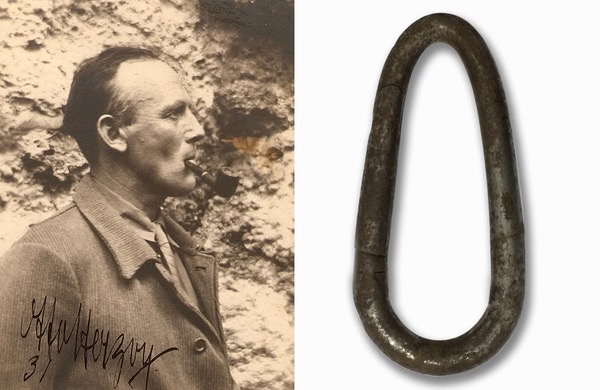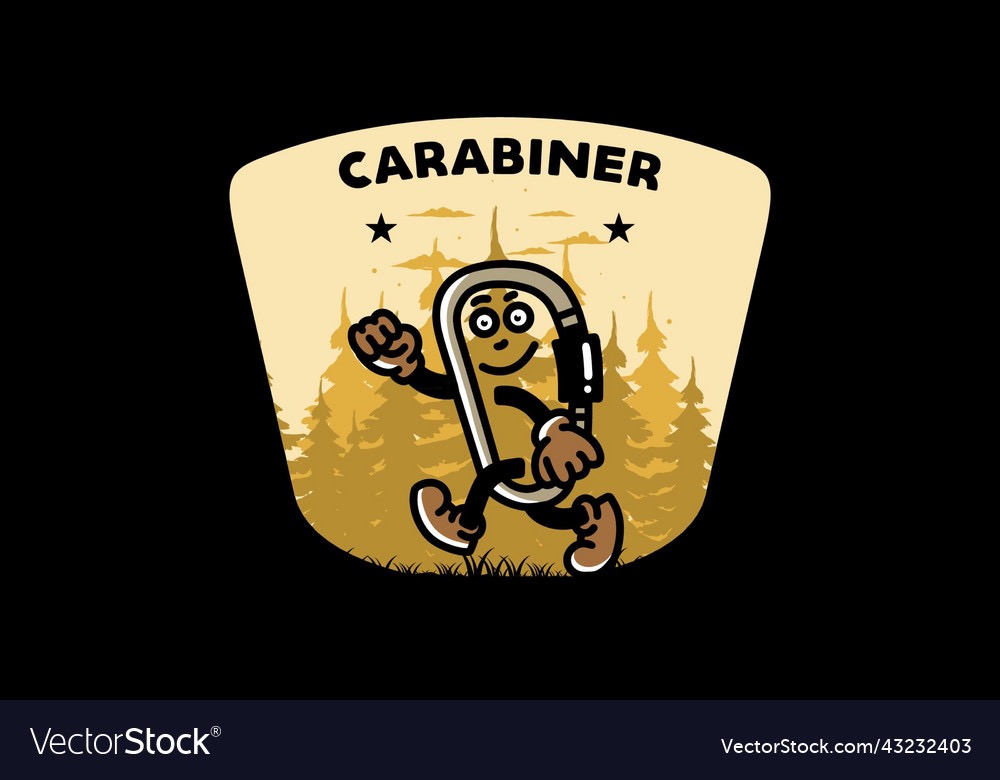A coupling link with a safety closure. It is commonly used by rock climbers.
That’s the definition, but this little mechanism has so much more to it than just a simple coupling link with a safety closure. It’s a shackle, it can be spelled with a c or a K, mean, just the name – CARE-A-BEAN-ER … that’s kind of funny. Who invented it? Why this name? Why don’t we just say coupling link.
The name is German – short for Karabinerhaken … “carbine rifle hook’ … for it was a hook that attached the carbine to his belt or to his bandolier.
The carabiners, often called biner, or even a crab, are spring loaded. They are often used in rope climbing. This being the primary use now, if the carabiner is not rated for climbing that it will be marked as such … “not for climbing”.
They get used for key chains, backpacking, camping, hot-air ballooning … even with diving harnesses.

They come in various shapes …
- D-SHAPE (asymmetric) … smaller on one end, less holding space – but also the most popular
- D-SHAPE (regular) … Strong, large opening, a bit more expensive
- PEAR SHAPE … larger opening, common with repelling, not as strong, can be heavier (probably to offset less strength), great with certain knot formations like the Munter hitch.
- OVAL … This is the original shape and are uniform in holding weight distribution, holds more gear than D or Pear Shape
The “gate’ or the spring loaded part that opens to allow things in and out of the biner can be straight, bent, or even wired that just catches. The gate can use a screw lock or not. And if it has the screws lock, that doesn’t mean it has to be used.
Carabiner strength is a standardized unit that is determined by use along the axis … it gets complicated but the key is if it gets used according to what it was made for. NOTE: When you use something for that which it was not made, strength bearing limits can be worthless.
In life, when we do stuff, things that we were not created for – we can break … physically, relationally, spiritually.
Who was the creator?
Grivel is a leader in mountain climbing gear for over 200 years. On it’s web page, Grivel gives the origin of the carabiner …
Otto Herzog (1888-1964) was a German climber and inventor; he got his nickname “Rambo” 70 years before the Silvester Stallone’s movie. In 1910 he had seen a fire brigade whose men wore pear-sharped karabiners on their belts (or “karabinerhaken”: hook for carabiner), and quickly adopted the gear on a few practice routes, proposing it to his friend Hans Dülfer and Hans Fiechtl.
Dülfer used them on the east façade of Fleishbank in 1912, and from that moment it became the indispensable link between rope and piton: a big step for climbing and a major evolution in the safety possibilities of the climber.

Yes, the Frenchman Pierre Allain is often credited with the first carabiner, but Rambo gets that credit. Pierre was the first to use the new modern alloy and commercialized it 1947. Along the years, others added the changes to shape, gate, and more.
The point … some often question how we could trust our life in God, yet we trust ourself to a tiny piece of alloy, made by lowest bidders in Thailand. It’s not about trusting the Thai – it’s more about we can and should trust God.
What do you put your trust in?


Leave a comment